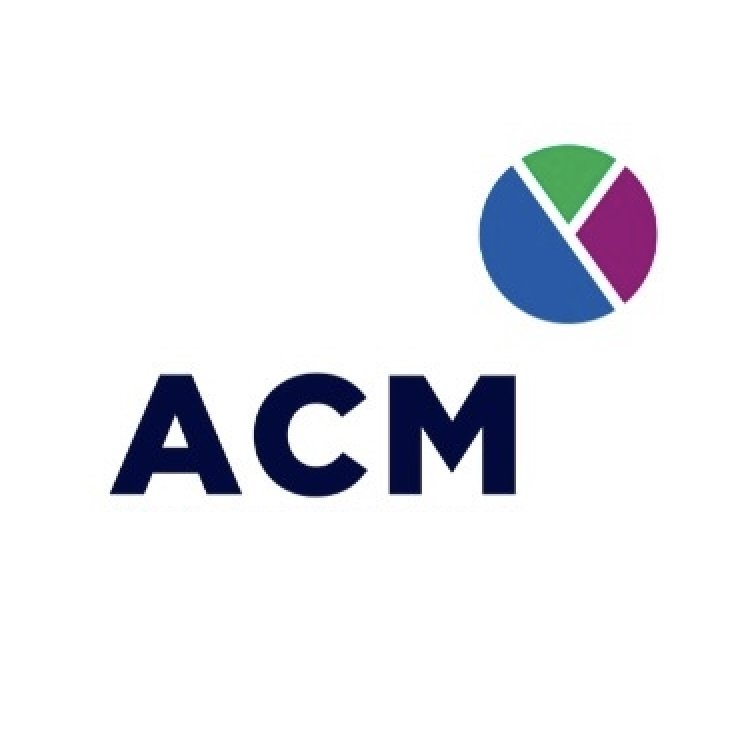
Getting a Promotion: Strategy for Successful Career Advancement
To the point: Aim for promotion by embodying the role you want, documenting measurable achievements, and building a solid business case. A proactive strategy that maximizes your chances of success.
Our HR consulting service for SMEs helps you create structured career development paths.
Are you aiming for a promotion but struggling to turn ambition into action? Did you know that 70% of career advancement decisions are based on strategic preparation and targeted communication?
Discover a proven method to embody the role you want even before it’s available, showcase your achievements with measurable proof, and negotiate your advancement like a winning business case for your company.
From documenting your accomplishments to mastering the art of catching your management’s attention at the right time, every key step is broken down to give you a winning strategy.
Ready to turn your efforts into real recognition?
1- Getting Promoted: The Strategic Guide to Fast-Tracking Your Career
2- Acting Like a Leader: The First Step Toward Your Promotion
3- Laying the Groundwork: A Well-Crafted Strategy
4- Communicating Your Value and Ambitions
5- Build Your Case and Negotiating Your Promotion
6- Managing the response and planning the next step
7- In Short: Your Roadmap to a Successful Promotion
Getting Promoted: The Strategic Guide to Fast-Tracking Your Career
Do you aspire to more responsibility, greater recognition, or a salary that matches your contributions?
Getting promoted is not a matter of luck, but the result of a well-executed strategy.
Few Canadian business owners realize that a structured approach combining preparation and targeted communication triples the odds of success.
I’ll guide you step by step in turning your ambition into reality through concrete actions:
- Demonstrate your value with measurable results,
- Prepare a strong case for your request,
- Strengthen your influence through focused networking.
Based on Reddit testimonials, Pumble insights, and BC CPA expertise, this guide gives you actionable tools. Ready to take action?
Acting Like a Leader: The First Step Toward Your Promotion
Excel in your current role—and beyond
To embody a future leader, you must master your current position. Be the go-to person on your team by delivering consistent performance. Go beyond expectations: identify weaknesses and propose concrete solutions. For example, if a process slows your team down, automate repetitive tasks using a digital tool. This approach shows your drive to improve both efficiency and effectiveness.
That added value is what makes you stand out—your ability to anticipate needs and optimize resources makes you indispensable.
Take Initiative and Solve Problems
Proactive leadership is demonstrated through concrete action.
Identify pain points and suggest structured solutions.
For instance, if a project is stalling, propose a collaborative tool like Trello. Volunteering for complex projects shows initiative and your ability to take on challenges. As EDHEC Executive Education notes, solving a key problem can “take a real thorn out of your employer’s side.” If you detect a potential delay, act quickly—adjust timelines and communicate with stakeholders. This kind of anticipation proves you can turn obstacles into opportunities.
Embody Company Values and Culture
Future leaders embody their company’s values.
Show alignment through professionalism and active collaboration. If your company values innovation, suggest bold ideas or integrate a new technology.
If collaboration is key, organize workshops to improve teamwork. This consistency builds credibility. By promoting inclusion and diversity in your projects, you inspire others and position yourself as a natural leader. Your strategic vision—extending beyond your current role—demonstrates both commitment and adaptability.
Laying the Groundwork: A Well-Crafted Strategy
Once the right mindset is in place, it’s time to build your case. Let’s create a clear roadmap that combines strategic preparation with concrete evidence.
Define a Clear Goal and Career Plan
Identify the exact position you want by studying its responsibilities, required skills, and challenges. Review internal job descriptions or role frameworks within your company. Discuss your goals with your manager. According to BC CPA, this step aligns your objectives with the company’s needs and shows long-term commitment. For example, propose leading a cross-functional project to demonstrate budget management skills while increasing your internal visibility. In the Canadian context, companies value candidates who align their ambitions with local priorities such as sustainability or international growth.
Document and Quantify Your Achievements
Your accomplishments should be measurable to prove impact. Keep a success journal where you record key wins and significant contributions.
Use the STAR method (Situation, Task, Action, Result) to structure your examples.
Here are examples of quantifiable achievements:
- Increased client portfolio revenue by 15% through a revised sales strategy.
- Reduced operational costs by 12% via process automation.
- Improved customer satisfaction by 20 points through a weekly feedback program.
- Completed a project two weeks early, saving $5,000 in potential costs.
- Trained three new hires, boosting productivity by 30% in three months.
These examples—based on Pumble insights—enhance your credibility. In a Canadian context, highlight achievements related to diversity or sustainability, such as an internal project on digital accessibility or energy efficiency in a Toronto or Vancouver office.
Develop the Skills Required for the Target Role
Analyze the gaps between your current skills and the required skills for the desired position.
Prioritize hard skills (e.g., budget management) and soft skills (e.g., leadership). Take certified courses through platforms like BC CPA, or join cross-functional projects. Performance reviews help identify growth areas and guide your development plan. In Québec or Ontario, certifications like PMP (Project Management Professional) or CFA (Chartered Financial Analyst) are highly valued. Consider online programs from Université de Montréal or the University of Toronto to strengthen your profile.
Communicating Your Value and Ambitions
A strong case means little without effective communication. In Canada, where companies value teamwork and transparency, two key factors make the difference: timing and strategic networking.
Choose the Right Moment to Bring It Up
Timing drives 60% of promotion decisions.
In Québec or Ontario, focus on growth periods—such as new government contracts or local partnerships. After a successful project (e.g., early delivery), request a meeting to discuss your contribution. According to Pumble, critical moments also include a manager’s departure or team restructuring. For instance, if a Montréal-based company merges with an SME, propose yourself for an integration role.
Start the Conversation with Your Manager
Begin by discussing your goals informally during weekly check-ins. Then, move to a dedicated meeting structured around three key points:
- Your achievements — e.g., “I reduced logistics costs by 15% last year.”
- Your skills aligned with company needs — e.g., “My fluency in English supports international collaborations.”
- Your concrete proposals — e.g., “I could lead the onboarding of a new remote team.”
Keep a constructive tone and link your ambitions to operational needs. If the goal is to boost productivity, show how your process automation skills can accelerate results.
Build Your Network and Increase Your Visibility
Promotions often rely on collective opinions. In the Canadian workplace, get involved in cross-functional projects, such as a Diversity, Equity, and Inclusion (DEI) committee, or corporate events (e.g., BDC conferences or seminars hosted by the Chamber of Commerce of Metropolitan Montreal). According to the BC CPA, 78% of internal promotions go to employees recognized beyond their immediate team. To break down silos, organize cross-departmental lunches or share your expertise through internal workshops. For example, a marketing project manager in Montreal could present the impact of a campaign on revenue to regional teams.
Working in silos limits your influence. A networking strategy helps offset this risk. As EDHEC Online points out, employers value well-connected candidates who can mobilize teams. In the Canadian context, participate in internal events or suggest partnerships between departments.
Build Your Case and Negotiate Your Promotion
Present a “Business Case” Focused on the Company
The moment of your promotion interview is decisive. Your pitch should demonstrate how your advancement addresses the company’s strategic needs. Instead of saying, “I deserve a promotion,” frame it as, “Here’s how I can solve organizational challenges in this new role.”
Structure your pitch in three parts:
- Highlight past successes (e.g., “I reduced costs by 15% on project X.”)
- Analyze the challenges of the target role (show you understand management’s expectations).
- Demonstrate your added value (e.g., “In this new position, I could automate task Y, freeing up 100 annual work hours for the team.”)
Subtly compare your candidacy with the risks of hiring externally: “Internally, I already understand existing processes, which avoids training costs and accelerates onboarding.” This approach strengthens your position by emphasizing business value rather than personal expectations.
Master the Salary Negotiation (The Often Overlooked Step)
Once a verbal agreement is reached, move on to salary negotiation — with preparation. Start with precise research: use market benchmarking tools to estimate your fair market value.
Set a realistic salary range:
- Minimum acceptable: your breakeven point
- Ideal target: justified by your achievements
- Maximum reasonable: aligned with company standards
Support your request with objective data: “Over the past 18 months, I generated an additional $220,000 in revenue through initiative Z.” Avoid personal arguments (“my expenses have increased”) to stay focused on business impact.
Anticipate Objections and Prepare Alternatives
Prepare responses to common objections. Here are best practices to adopt:
| Do’s | Don’ts |
|---|---|
| Preparation: Come with a documented file (achievements, plan) | Show up empty-handed and improvise |
| Argumentation: Focus on your future value to the company | Talk only about your personal wishes or seniority |
| Attitude: Listen actively, ask questions, engage in dialogue | Be defensive, threaten, or use blackmail |
| Negotiation: Propose a salary goal based on market data | Demand a raise without solid justification |
| Flexibility: Discuss alternatives (training, added responsibilities) | Adopt an inflexible “all or nothing” approach |
If the budget is tight, propose intermediate solutions: “A digital leadership training could prepare me for this role within six months.” If the issue is lack of experience, suggest internal mentoring or targeted certifications.
Managing the response and planning the next step
Whatever the verdict, your reaction to the promotion request defines your professional credibility. A thoughtful response—whether positive or negative—demonstrates maturity. Focus on managing rejection, creating a development plan, and seeking constructive feedback to turn this stage into a strategic lever.
You got the promotion: congratulations!
A “yes” deserves a structured response. Thank your manager for their trust, then request a written confirmation detailing the new title, responsibilities, salary, and effective date. Finally, express your enthusiasm with a message such as, “I’m motivated to take on this challenge.” Suggest a follow-up meeting to organize your transition: redistribute tasks and prioritize short-term goals.
In case of rejection: bounce back strategically
A “no” shouldn’t be an end, but a trigger. Staying calm and professional strengthens your image. Turn this moment into an opportunity with a clear action plan.
- Ask for precise feedback: Ask your manager targeted questions, such as: “Which skills should I strengthen to be considered for this role in the future?”
- Set up a development plan: Define measurable goals (e.g., earn a project management certification in 3 months) and performance indicators (e.g., quarterly evaluation of your engagement).
- Plan a follow-up: Suggest a meeting in 3–6 months to review your progress. For example: “Could I propose a check-in in four months?”
- Assess your options: If growth remains limited, explore additional internal responsibilities or external opportunities.
Turn rejection into leverage. According to a study, 78% of managers value employees who transform a “no” into a structured action plan—proof of resilience and strategic vision.
In short: your roadmap to a successful promotion
Ready to move up? Canadian business leaders succeed by building their promotion step by step. Here are the key pillars:
- Act like a leader before holding the title. Take concrete initiatives, such as structuring a new process or mentoring a colleague, as highlighted by Reddit posts.
- Document your successes with measurable data. Pumble cites an employee who boosted sales by 25% by optimizing a system—his promotion followed.
- Communicate your ambitions strategically. Follow BC CPA’s advice: raise the topic during an annual review, not in a crisis period.
- Negotiate your value with a strong business case. A marketing manager earned a promotion by showing how his tools could increase productivity by 15%.
- Learn from every response. One director turned a rejection into an opportunity by securing a personalized training plan.
Internal networking is decisive: promoted candidates often built alliances across three departments. Could you be the next to move up?
For SME leaders looking to structure their teams’ growth, expert guidance can make all the difference. Discover our HR consulting services for SMEs to build a high-performing organization.
Your promotion is built through proactive leadership, measurable achievements, targeted communication, and value-driven negotiation. Turn refusals into progress and successes into opportunities to become indispensable. For leaders optimizing these strategies, our human management support aligns individual ambitions with collective growth. Discover how we can bring your projects to life—together.




